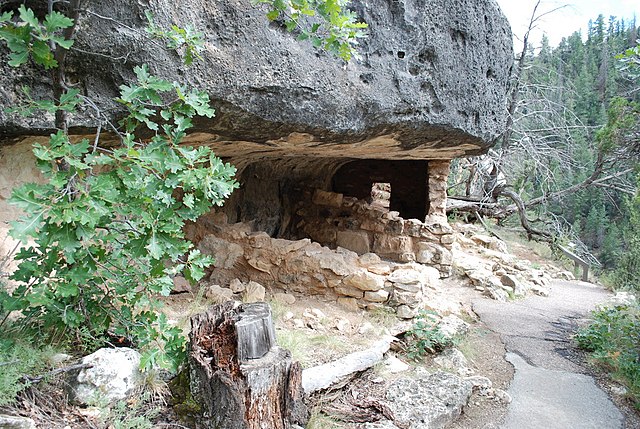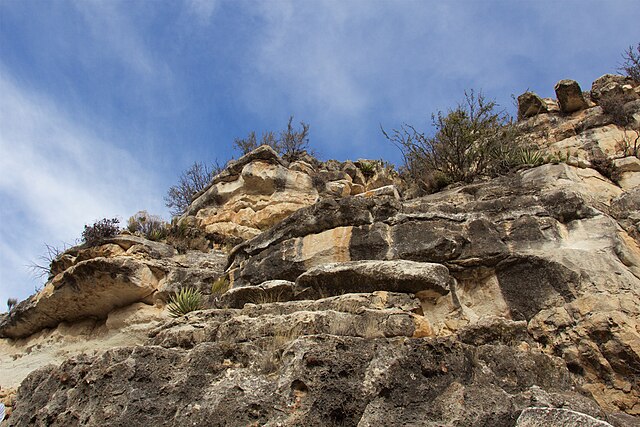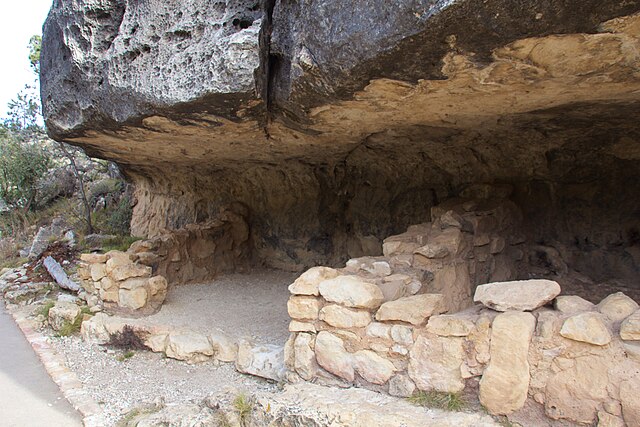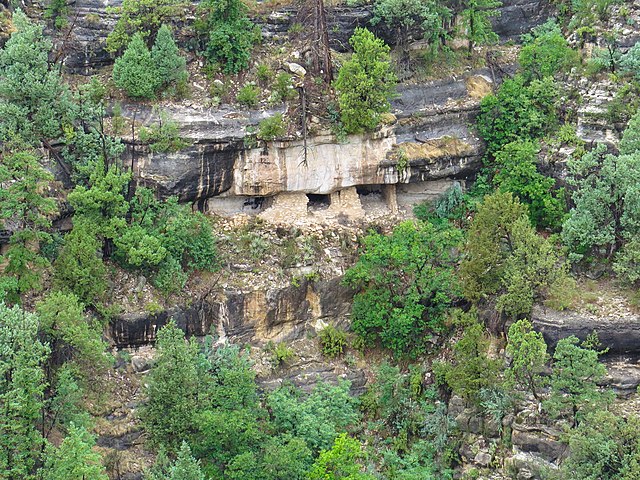Have you ever wondered what it would be like to step back in time and walk through the homes of ancient civilizations? Walnut Canyon National Monument offers exactly that experience, tucked away in the high desert of northern Arizona. This remarkable site preserves not just stunning natural beauty, but also the fascinating remnants of the Sinagua people who called this canyon home over 800 years ago.
What Makes Walnut Canyon National Monument Special?
Walnut Canyon National Monument stands as one of Arizona’s most underrated treasures. Unlike the crowded tourist destinations that dominate the state’s landscape, this hidden gem offers visitors an intimate encounter with both natural wonder and human history. The monument protects over 80 cliff dwelling rooms built directly into the canyon’s limestone walls, creating a unique archaeological site that feels like stepping into a living history book.
What sets Walnut Canyon apart isn’t just its impressive cliff dwellings, but the incredible preservation of these ancient structures. The dry desert climate and the natural protection provided by the limestone overhangs have kept these 800-year-old homes in remarkable condition. You can still see the original stone walls, wooden beams, and even soot stains from ancient cooking fires.
The monument covers 3,529 acres of diverse high desert landscape, ranging from ponderosa pine forests on the rim to desert scrub vegetation in the canyon bottom. This ecological diversity creates habitats for over 100 bird species and numerous mammals, making it not just a historical site but also a wildlife sanctuary.
The Rich History of Walnut Canyon
Understanding the history of Walnut Canyon means diving into the story of the Sinagua people, whose name literally means “without water” in Spanish. These resourceful people thrived in this seemingly harsh environment for centuries, developing sophisticated techniques for surviving in the high desert.
Ancient Sinagua Civilization
The Sinagua people occupied Walnut Canyon from approximately 1125 to 1250 CE, during what archaeologists call the Pueblo III period. These weren’t nomadic people passing through – they were skilled farmers, builders, and craftspeople who created a thriving community in this challenging environment.
What makes the Sinagua particularly fascinating is their ability to adapt to their surroundings. They didn’t fight against the desert environment; instead, they worked with it. The limestone alcoves provided natural shelter from the elements, while the canyon walls offered protection from enemies and harsh weather. The Sinagua modified these natural shelters, building walls and creating comfortable living spaces that took advantage of the canyon’s natural features.
The Sinagua were skilled farmers who practiced dry farming techniques, growing corn, beans, and squash without irrigation. They also hunted deer, rabbits, and other game, and gathered wild plants like pine nuts, prickly pear cactus fruits, and various seeds. This diverse diet helped them thrive in an environment that might seem uninhabitable to modern visitors.
Archaeological Significance
Walnut Canyon represents one of the most significant archaeological sites in the American Southwest. The exceptional preservation of the cliff dwellings has provided archaeologists with invaluable insights into Sinagua daily life, architecture, and social organization.
Excavations at the site have uncovered pottery, tools, jewelry, and other artifacts that paint a picture of a sophisticated society. The pottery styles show influences from other southwestern cultures, indicating that the Sinagua were part of extensive trade networks that connected communities across the region.
One of the most intriguing aspects of Walnut Canyon is the mystery surrounding the Sinagua’s departure. Around 1250 CE, the people abandoned their canyon homes, leaving behind their belongings and never returning. Theories about their departure include drought, social upheaval, or migration to join other communities, but the exact reasons remain one of archaeology’s unsolved puzzles.
Geological Wonders of Walnut Canyon

The dramatic landscape of Walnut Canyon tells a story that spans millions of years. The canyon itself was carved by Walnut Creek, which cut through layers of sedimentary rock over countless millennia, creating the spectacular gorge we see today.
Formation and Rock Layers
The geology of Walnut Canyon is like reading a book written in stone. The canyon walls expose multiple layers of rock, each representing different periods in Earth’s history. The most prominent layer is the Kaibab Limestone, which forms the rim of the canyon and provides the natural alcoves where the Sinagua built their homes.
Below the limestone, you’ll find layers of sandstone and shale that create the canyon’s distinctive stepped appearance. These different rock types erode at different rates, creating the natural shelters that made the canyon so attractive to ancient peoples. The harder limestone forms protective overhangs, while the softer rock layers underneath erode away, creating spacious alcoves perfect for human habitation.
Unique Limestone Cliffs
The limestone cliffs of Walnut Canyon are more than just scenic – they’re the reason the monument exists. These 400-foot-tall walls contain hundreds of natural alcoves, formed through a process called solution weathering. Over thousands of years, slightly acidic rainwater dissolved the limestone, creating the caves and overhangs that the Sinagua transformed into homes.
The limestone also preserved organic materials that would have decomposed in other environments. Wooden beams, basketry, and even food remains have been found in the cliff dwellings, providing archaeologists with unprecedented insights into ancient life.
Exploring Walnut Canyon: Trails and Activities
Visiting Walnut Canyon isn’t just about looking at ruins from a distance – it’s about experiencing the site firsthand. The monument offers several ways to explore, each providing different perspectives on this remarkable place.
Island Trail: The Main Attraction
The Island Trail is the crown jewel of Walnut Canyon National Monument. This 1.2-mile loop trail descends 240 feet into the canyon, taking you directly past 25 cliff dwelling rooms. It’s called the “Island Trail” because it follows a natural peninsula of rock that juts into the canyon, surrounded by the dramatic gorge on three sides.
Don’t let the relatively short distance fool you – this trail packs a punch. The steep descent might seem easy at first, but remember that what goes down must come up. The return climb can be challenging, especially at the monument’s 6,690-foot elevation. However, the effort is absolutely worth it for the chance to walk through actual 800-year-old homes.
Along the trail, you’ll encounter rooms that still contain their original stone walls and wooden support beams. Interpretive signs help you understand how the Sinagua lived, from their daily routines to their architectural techniques. The trail also offers spectacular views of the canyon and opportunities to spot wildlife.
Rim Trail: Scenic Views for Everyone
For visitors who prefer a gentler experience, the Rim Trail offers stunning canyon views without the strenuous climb. This 0.7-mile paved trail is accessible to wheelchairs and provides overlooks where you can peer down into the canyon and spot cliff dwellings from above.
The Rim Trail is particularly beautiful during sunrise and sunset when the canyon walls glow with warm colors. It’s also an excellent choice for families with young children or anyone with mobility concerns. Several viewing areas along the trail offer benches where you can sit and contemplate the remarkable landscape.
Ranger Programs and Educational Opportunities
Walnut Canyon National Monument offers ranger-led programs that bring the site’s history to life. These programs vary seasonally but often include guided walks, evening presentations, and special demonstrations of ancient technologies.
The visitor center houses a small but informative museum with exhibits about Sinagua culture, local geology, and the area’s natural history. Rangers are incredibly knowledgeable and passionate about the site, and they’re always happy to answer questions and share stories about the monument’s history and significance.
Planning Your Visit to Walnut Canyon
Making the most of your visit to Walnut Canyon requires a bit of planning. The monument is open year-round, but conditions can vary dramatically depending on the season.
Best Time to Visit
The best time to visit Walnut Canyon depends on what you’re looking for. Spring (March through May) and fall (September through November) offer the most comfortable weather conditions, with moderate temperatures and generally clear skies. These seasons are ideal for hiking the Island Trail and spending extended time outdoors.
Summer can be challenging due to afternoon thunderstorms and intense heat, though early morning visits can be pleasant. Winter brings snow and ice, which can make the trails treacherous, but it also offers a unique perspective on the canyon landscape.
Entrance Fees and Hours
Walnut Canyon National Monument charges an entrance fee that helps support maintenance and preservation efforts. The monument is typically open daily from 8:00 AM to 5:00 PM, though hours may vary seasonally. It’s always wise to check the National Park Service website or call ahead to confirm current hours and any special conditions.
What to Bring
Preparing for your visit means thinking about both comfort and safety. Essential items include:
Water is absolutely crucial – bring more than you think you’ll need, especially if you plan to hike the Island Trail. The high desert environment and elevation can lead to dehydration quickly. Sturdy hiking shoes with good traction are essential for the Island Trail, as some sections can be steep and rocky.
Sun protection is vital year-round at this elevation. Bring sunscreen, a hat, and sunglasses. The high desert sun can be intense, even on cloudy days. A camera is a must for capturing the stunning scenery and ancient architecture, but remember that tripods and professional equipment may require special permits.
Nearby Attractions and Activities
Walnut Canyon National Monument makes an excellent addition to a larger northern Arizona adventure. The region is rich with natural wonders and cultural sites that complement your canyon experience.
Flagstaff Adventures
Just 10 miles away, Flagstaff offers a perfect base for exploring Walnut Canyon. This charming mountain town provides accommodations, restaurants, and additional attractions. The Museum of Northern Arizona houses extensive collections of southwestern art and artifacts, providing context for your Walnut Canyon visit.
Flagstaff also serves as a gateway to other outdoor adventures. The Arizona Snowbowl offers skiing in winter and scenic chairlift rides in summer. The Flagstaff Urban Trail System provides miles of hiking and biking trails through ponderosa pine forests.
Other National Monuments
Walnut Canyon is part of a trio of national monuments in the area, each offering unique perspectives on ancient southwestern cultures. Wupatki National Monument, about 40 miles northeast, preserves multiple pueblo ruins built by the Sinagua and other ancestral Puebloan peoples.
Sunset Crater Volcano National Monument, between Walnut Canyon and Wupatki, protects the site of a volcanic eruption that occurred around 1085 CE. This eruption actually helped create the conditions that allowed the Sinagua to thrive in the region by depositing fertile volcanic ash across the landscape.
Wildlife and Plant Life at Walnut Canyon

Walnut Canyon National Monument protects not just archaeological treasures but also diverse ecosystems that support a wide variety of plant and animal life.
Desert Flora
The monument’s plant communities change dramatically with elevation and location within the canyon. On the rim, you’ll find ponderosa pine forests mixed with Gambel oak, while the canyon interior supports more desert-adapted species.
Prickly pear cactus, yucca, and various desert grasses dominate the drier areas. These plants have evolved remarkable adaptations to survive in the high desert environment. The prickly pear cactus, for example, was an important food source for the Sinagua people, who harvested both the fruits and the pads.
Wildflowers put on spectacular displays during spring and after summer rains. Indian paintbrush, lupine, and penstemon add splashes of color to the desert landscape. These seasonal blooms provide important nectar sources for the area’s pollinators.
Animal Species
The diverse habitats within Walnut Canyon support an impressive array of wildlife. Over 100 bird species have been recorded in the monument, including red-tailed hawks, great horned owls, and various songbirds. The canyon’s walls provide nesting sites for swallows and other cliff-dwelling birds.
Mammals range from tiny rodents to elk and black bears. Mule deer are commonly seen, especially during dawn and dusk. Coyotes, bobcats, and mountain lions also inhabit the area, though they’re rarely seen by visitors. The monument’s diverse habitats support everything from desert cottontail rabbits to tree squirrels.
Photography Tips for Walnut Canyon
Walnut Canyon offers incredible photographic opportunities, but capturing its beauty requires some planning and technique.
The golden hours of sunrise and sunset provide the most dramatic lighting for canyon photography. The limestone walls take on warm, glowing colors that create stunning contrast with the dark alcoves. Early morning light is particularly beautiful on the Island Trail, illuminating the cliff dwellings from the east.
For the best shots of the cliff dwellings, consider bringing a telephoto lens. This allows you to capture details of the ancient architecture without disturbing the archaeological sites. Wide-angle lenses work well for capturing the scale and grandeur of the canyon landscape.
Weather can change quickly in the high desert, creating dramatic cloud formations and lighting conditions. Don’t put your camera away if storms are approaching – some of the most spectacular photos come from dramatic weather conditions.
Conservation Efforts and Preservation

Walnut Canyon National Monument faces ongoing challenges in preserving its archaeological and natural resources for future generations. Climate change, increased visitation, and natural weathering all threaten the site’s integrity.
The National Park Service works continuously to monitor and protect the cliff dwellings. This includes regular structural assessments, careful visitor management, and research into preservation techniques. Rangers also work to educate visitors about the importance of protecting these irreplaceable cultural resources.
Conservation efforts extend beyond the archaeological sites to include the entire ecosystem. Wildlife monitoring, invasive species control, and habitat restoration are all part of the monument’s management plan. These efforts ensure that Walnut Canyon remains a place where both cultural and natural heritage can be experienced and appreciated.
Visitors play a crucial role in conservation by following Leave No Trace principles, staying on designated trails, and respecting both the archaeological sites and the natural environment. Every visitor has the opportunity to be a steward of this remarkable place.
Conclusion
Walnut Canyon National Monument offers something truly special – a chance to connect with both ancient human history and the natural world in a setting of breathtaking beauty. Whether you’re drawn by the mystery of the Sinagua people, the challenge of the Island Trail, or simply the peaceful beauty of the desert landscape, this hidden gem provides an unforgettable experience.
The monument reminds us that remarkable places don’t always come with crowds and commercialization. Sometimes the most meaningful experiences happen in quiet places where you can hear the whisper of wind through ancient stone walls and imagine the lives of people who called this remarkable canyon home centuries ago.
As you plan your visit to Walnut Canyon, remember that you’re not just seeing a tourist attraction – you’re stepping into a place where human ingenuity, natural beauty, and cultural heritage converge in ways that few places on Earth can match. It’s a reminder of our connection to both the past and the landscape that sustains us.
Frequently Asked Questions
Q: How difficult is the Island Trail at Walnut Canyon National Monument?
A: The Island Trail is considered moderately strenuous due to its steep descent and the challenging return climb. The trail drops 240 feet in elevation, and the return ascent can be particularly challenging at 6,690 feet elevation. Most visitors in reasonable physical condition can complete the trail, but it’s important to take your time and bring plenty of water.
Q: Can I go inside the cliff dwellings at Walnut Canyon?
A: No, visitors cannot enter the cliff dwellings to protect these fragile 800-year-old structures. However, the Island Trail passes very close to 25 different rooms, allowing you to see the ancient architecture up close and peer into the dwellings from the trail. This proximity gives you an intimate view of Sinagua life without damaging the archaeological sites.
Q: What’s the best time of year to visit Walnut Canyon National Monument?
A: Spring (March-May) and fall (September-November) offer the most comfortable weather conditions with moderate temperatures and clear skies. Summer can be hot with afternoon thunderstorms, while winter may bring snow and ice that can make trails dangerous. Early morning visits are recommended during summer months.
Q: How long does it take to visit Walnut Canyon National Monument?
A: Most visitors spend 2-4 hours at the monument. This includes time to explore the visitor center, hike either the Island Trail (1-2 hours) or Rim Trail (30-45 minutes), and enjoy the scenic overlooks. If you’re interested in ranger programs or want to spend more time photographing the site, plan for a half-day visit.
Q: Are there facilities and accommodations at Walnut Canyon National Monument?
A: The monument has a visitor center with restrooms, a small museum, and gift shop, but no camping or lodging facilities. The nearest accommodations are in Flagstaff, about 10 miles away. There are picnic areas but no restaurants, so bring your own food and water, especially for longer visits.

